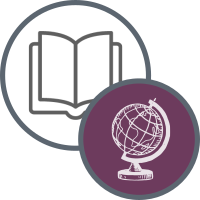You are here
Social Studies Lesson Planning for Learning and Reflection
Effective Lesson Planning and Reflection in Social Studies Education
Phase IV Lesson Elements
Educators that attended the All Students All Standards Institute (2016) submitted lesson plans which included the following four essential elements:
- Element 1 | Classroom Context
- Element 2 | Lesson Planning with Rationale
- Element 3 | Description of the Lesson Implementation
- Element 4 | Reflection
Click here to learn more about the four essential elements.
Model Lesson
7th Grade Social Studies: "Ch...Ch....Ch...Changes..." District Sample Curriculum Project (Learning Experience #10). (Stephanie Hartman, Social Studies Content Specialist, CDE)
Lesson Description: This lesson will introduce the concepts of exploration, imperialism, and colonization in Africa. Additionally, students will learn how the discovery and access to resources spurred the “Scramble for Africa.”
- Sample Lesson Plan: Concept-Based Lesson Planning Process Guide
- Sample Student Journal: The Scramble for Africa
- Sample Political Cartoon: A Piece of the Pie
- Sample Sources: Exploration and Exploitation
- Sample Student Reflection Questions: Reflecting on Student Learning
Sample lessons submitted by Social Studies Educators
The lessons below represent some of the approaches teachers have taken in lesson design. One purpose of the lesson design project was to tap into the questioning and reflective practices that enable deliberate and intentional instructional decisions. We wanted to tap into the metacognitive processes that underlie the decisions teachers make as they plan, deliver, and reflect on their instruction. The district documents represent the way one district leader has taken in working with her teachers on implementing instructional shifts in social studies.
4th Grade Colorado History: European Exploration of Colorado. (Charles Kastens, 4th Grade Teacher, Cherry Creek School District).
Lesson Description: Students will gain knowledge about European explorers that came to Colorado, and why they came here.
- Sample Lesson Plan: European Exploration in Colorado
- Expedition Leader Resource: A List of the Qualities, Skills, and Tools for Expedition Leaders
- Sample Student Letters: Student letters to President Jefferson
6th Grade Personal Financial Literacy: "Who Decides What You Buy" District Sample Curriculum Project (Show Me the Money Instructional Unit, Learning Experience #1). (Della Hoffman, 6th Grade Teacher, Denver Public Schools)
Lesson Description: This lesson will introduce the concepts of differing kinds of economic systems. This lesson will come during a series of lessons within Learning Experience 1 as part of the Show Me the Money unit for 6th grade Social Studies. Students will be continuing their learning about scarcity of resources and how this leads to societal and individual decision making.
- Sample Lesson Plan: Who Decides What You Buy?
- Sample 5 Day Plan: Economic Systems
AP U.S. History Class: The California Gold Rush. (Kurt Knierim, high school social studies teacher, Poudre School District).
Lesson Description: This lesson engages students with the craft of the historian through a close reading of an unpublished California Gold Rush Letter. Students will have to examine the claims of the letter and compare those to secondary sources about the 1849 Gold Rush, eventually writing their own history of the period.
- Element 1: Classroom Context
- Element 2: Lesson Plan and Rationale
- Element 3: Lesson Implementation
- Element 4: Lesson Reflection
- Supporting Lesson Documents: Gold Rush Letter
- Supporting Lesson Documents: Gold Rush Letter Transcription
- Reflections on the Lesson: Student Reflections
- Assessment: Sample Student Textbook Entries
High School Economics/Personal Financial Literacy: How Risky Are You? (Andy Roob, Social Studies TOSA, Brighton School District)
Lesson Description: Students continuously learn about how to make financial decisions. In this lesson, they consider their risk tolerance and what that means to their investing decisions.
- Sample Lesson Plan: Investing Decisions
- Supporting Lesson Documents:Investment Return Chart
- Supporting Lesson Documents: Compound Interest Chart
- Supporting Lesson Documents: Expert Opinions
Teacher Education Course - Pre-service teachers: The Damming Evidence (Marianne Kenney, Adjunct, Metro State University).
Lesson Description: This lesson was taught to students in a teacher education course as a way of demonstrating the inquiry process. The lesson advances the idea of sustainability by placing students in the real-world situation of weighing the costs/benefits of mega-dam projects. Ultimately they must decide between sustainability or economic development.
- Elements 1 - 4: Geography Lesson - The Damming Evidence
- Sample Lesson Plan: The Damming Evidence
- Supporting Lesson Documents: Lesson PowerPoint
- Supporting Lesson Documents: Graphic Organizer
- Supporting Lesson Documents: The Aswan Dam
- Supporting Lesson Documents: The Colorado River
- Supporting Lesson Documents: Three Gorges Dam
- Supporting Lesson Documents: Dam Benefits
- Supporting Lesson Documents: Dam Costs
- Supporting Lesson Documents: Mekong Under "Very High Threat" article
- Supporting Lesson Documents: Reflection Questions



Connect With Us





